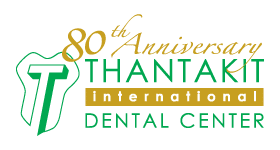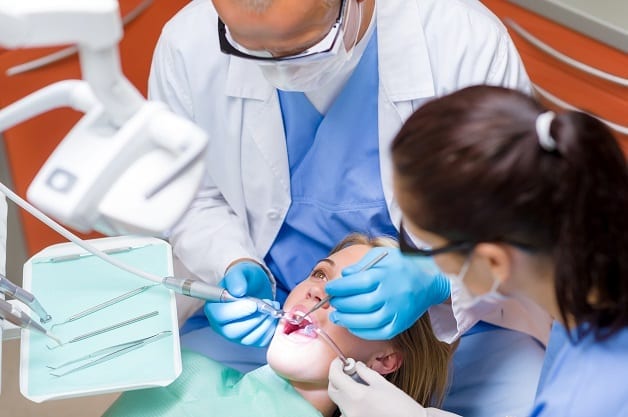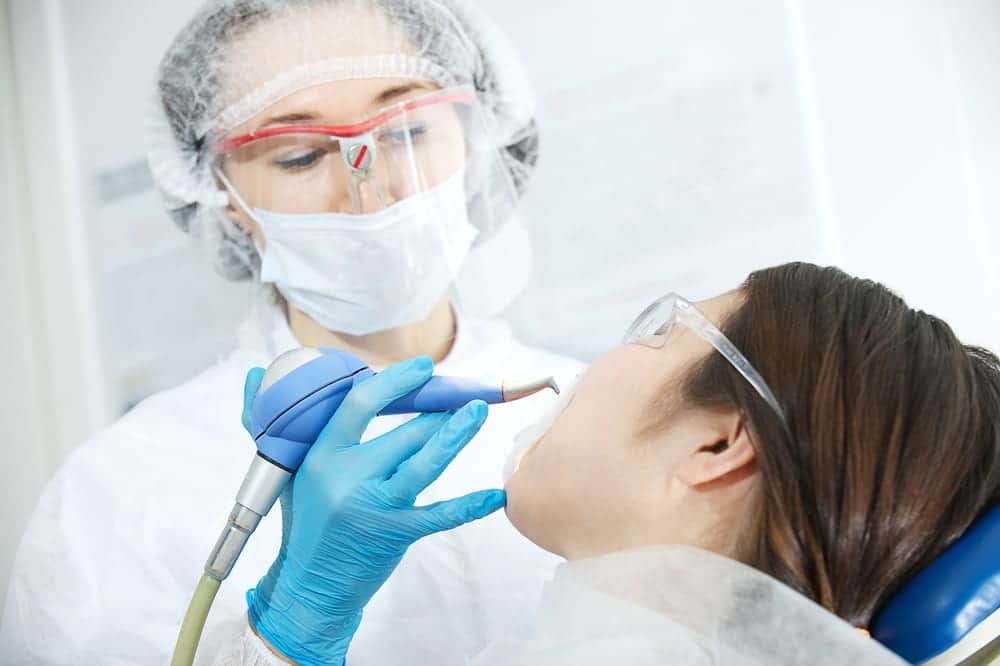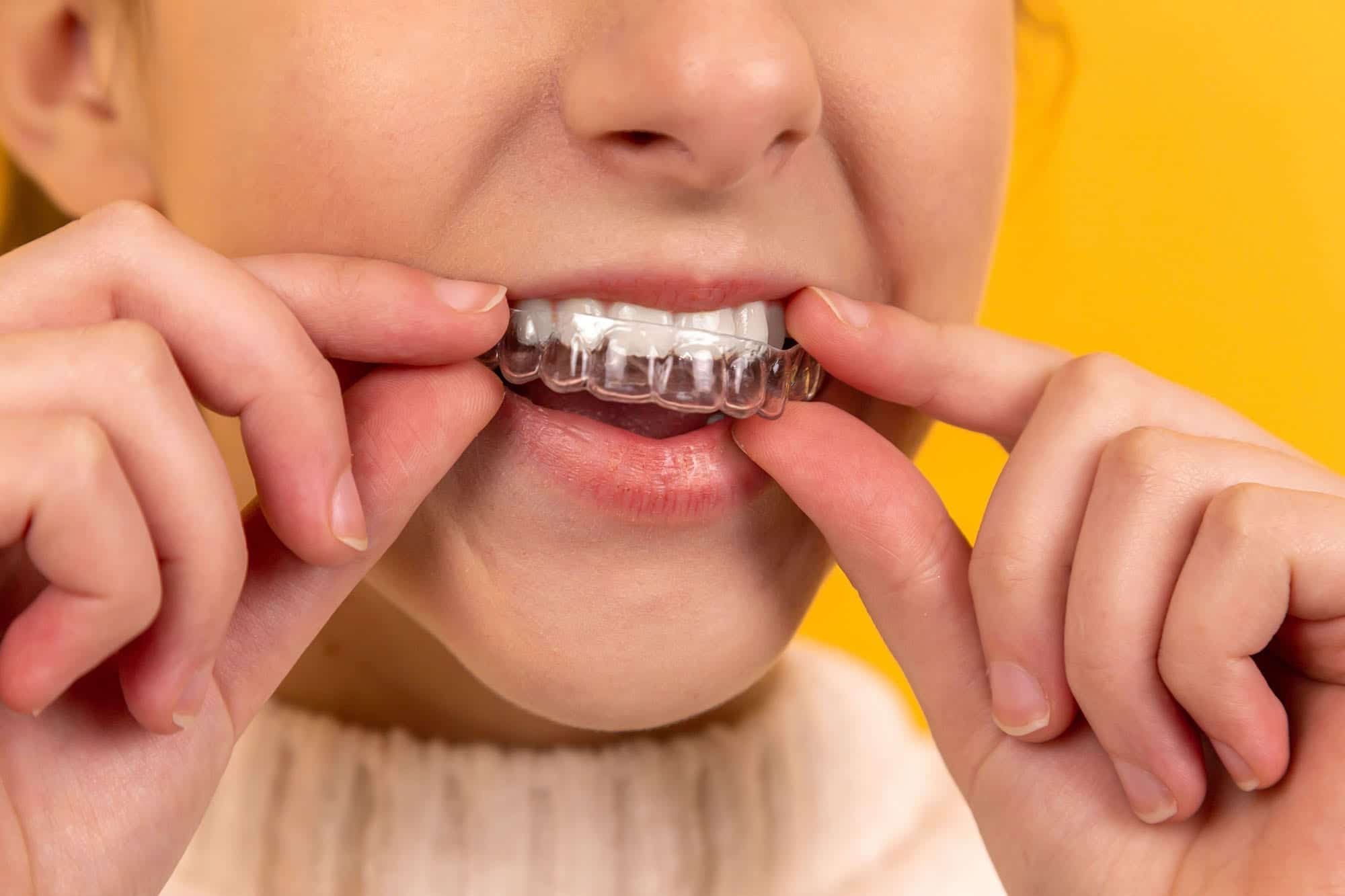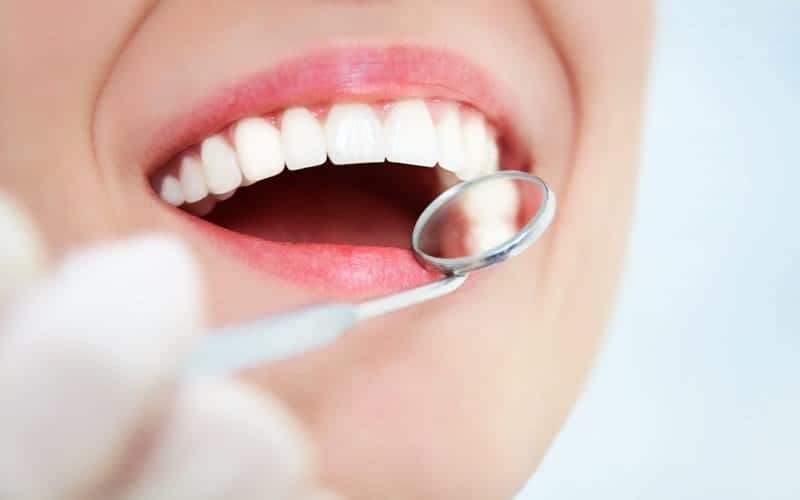Many people considering dental implants soon learn that bone grafts or sinus lifts are often needed before the actual implant can be placed. These preparatory procedures help create a healthy and strong foundation for implants, especially when there has been bone loss in the jaw.
From what I’ve seen working with dental tourists for years, these extra steps can make implants possible for people who previously thought a beautiful, functional smile was out of reach.
The truth is, dental implants have transformed modern dentistry. They offer permanence and comfort that dentures or bridges simply can’t match. But here’s the catch: implants need solid bone to anchor into, just like a fence post needs firm ground.
When that bone isn’t there naturally, we have to build it. That’s where bone grafting and sinus lifting come in.
For international patients, the idea of traveling abroad for dental surgery can feel daunting. Add in procedures like bone grafts, and the anxiety goes up another notch.
But Thailand, particularly Bangkok, has earned its place as one of the world’s leading destinations for advanced dental care. The combination of cutting-edge technology, internationally trained specialists, and genuinely affordable costs makes it an appealing choice for thousands of dental tourists every year.
Page Contents
At a Glance
-
Bone graft = rebuilds thin/soft jawbone anywhere in the mouth
-
Sinus lift = adds bone height in the upper back jaw
-
Typical healing = 3–6 months before implants
-
Stay in Bangkok = 7–10 days for graft/sinus lift, 5–7 days for implants
-
Success rates = commonly >90% with proper planning and aftercare
-
Good candidates = non-smokers or smokers willing to stop during healing

Why Dental Tourists Choose Thailand for Implant Procedures
Bangkok has built a strong reputation for dental tourism thanks to its blend of affordability, quality care, and genuine hospitality. Well-known clinics like Thantakit International Dental Center welcome thousands of international patients annually, providing everything from basic cleanings to complex surgeries such as bone grafts and sinus lifts.
What many travelers tell me is that the experience feels surprisingly comfortable. You’re not just another patient number.
The staff remember your name, ask about your concerns, and genuinely want you to feel at ease. Clinics like Thantakit have support teams dedicated to dental tourists, helping with treatment planning, appointment scheduling, accommodation recommendations, and even airport pickups.
One thing that really stands out is the level of communication and modern technology. Patients often discover staff who speak excellent English and surgeons with training from Europe, North America, or Australia.
Many dentists at top Bangkok clinics have completed advanced certifications in implantology and oral surgery from internationally recognized programs. Virtual consultations before you book your flight mean you can review your case with the actual surgeon who’ll be treating you, eliminating anxious “what if” moments.
Why Bone Grafting or Sinus Lifting May Be Needed
Losing a tooth doesn’t just leave a visible gap in your smile. Over time, something less visible but equally important happens: the jawbone in that area starts shrinking.
This happens because bone is living tissue that needs stimulation from the pressure of biting and chewing with natural teeth. Without this daily workout, the bone slowly begins to disappear, a process dentists call bone resorption.
Think of it like muscle. If you stop using a muscle, it gets smaller and weaker. Jawbone works the same way.
Within the first year after tooth loss, you can lose up to 25% of bone width in that area. If the gap stays empty for several years, the bone loss can become severe enough to change your facial structure, making you look older than you are.
This becomes a critical concern during implant planning. Dental implants are essentially titanium posts that act as artificial tooth roots. They must be anchored in strong, healthy jawbone to function properly.
If there’s not enough bone, the implant could fail to integrate, become loose, or never take hold at all.
From my experience, the most common reasons for needing these preparatory procedures include:
Bone loss due to gum disease (periodontitis). This chronic infection doesn’t just affect the gums. It actively destroys the bone that holds teeth in place. Even after the infection is treated, that lost bone doesn’t grow back on its own.
Loss of bone after tooth removal. When a tooth is extracted, especially if the gap is left for months or years, the surrounding bone starts to collapse inward. The longer you wait, the more bone you lose.
Not enough vertical height in the upper jaw. Sometimes the sinus cavity sits too close to where an implant should go. This is especially common in the back upper jaw, where molars used to be.
As we age, sinuses can expand downward, leaving just a thin sliver of bone.
Previous failed implants or dental infections. These can leave behind damaged bone that needs rebuilding before trying again.
In these situations, either a bone graft or a sinus lift, or sometimes both, gets recommended before moving ahead with implants. According to Thantakit’s implant specialists, taking the time to prepare the bone properly dramatically improves long-term success rates, turning uncertain outcomes into predictable ones.
Pre-op Checklist for Dental Tourists
-
Share recent X-rays/CBCT with the clinic
-
List medications, allergies, and medical conditions
-
Stop smoking and vaping (ideally 2 weeks before and after)
-
Plan a soft-food menu for the first week
-
Book a hotel close to the clinic; add 1–2 buffer days
-
Arrange airport transfer if you prefer low-stress travel
Understanding Bone Graft Procedures
Bone grafting is the process of placing material in areas where the jawbone is too thin, too soft, or simply not tall enough. The main aim is to build up that spot so it can carry an implant securely.
This isn’t new experimental science. Dentists have been performing bone grafts for decades, and the techniques have become incredibly refined.
Here are the main types of bone graft materials offered at advanced clinics like Thantakit Dental Center:
Autograft. This is bone taken from your own body, usually from another part of your jaw, the chin, or in rare cases, the hip. Because it’s your own tissue, it tends to bond exceptionally well with the original bone.
The downside is that it requires a second surgical site.
Allograft. This is bone from a human donor, carefully processed and sterilized to be completely safe. It avoids the need for a second surgery site on your own body, which many patients appreciate.
The material acts as a scaffold that your body gradually replaces with your own bone.
Xenograft. Bone from animals, most often cows (bovine), treated and processed for safe use in humans. This material is highly biocompatible and commonly used in dental bone grafting worldwide.
Alloplast. Synthetic bone substitutes, often made from minerals such as calcium phosphate or bioactive glass. These materials are lab-created but designed to mimic natural bone structure.
The choice depends on the area’s size, your overall health, budget considerations, and sometimes personal preference. Some patients feel more comfortable with synthetic materials, while others prefer human donor tissue.
Open discussion about these options is important, so everyone feels confident with the plan.
The bone grafting process at a clinic like Thantakit typically includes several steps. First comes detailed examination of your jaw using 3D X-rays or CBCT (cone beam computed tomography) scans.
This imaging lets the surgeon see exactly how much bone you have and where grafting is needed. We’re talking about millimeter-level precision here.
On surgery day, the area gets numbed with local anesthesia. For nervous patients or more extensive procedures, IV sedation is available.
The surgeon makes a small opening in the gums to access the bone, then carefully places the graft material and secures it. Often this involves tiny pins or protective membranes that prevent the graft from shifting during healing.
Finally, the gums are sutured back in place. Modern clinics use minimally invasive techniques, piezoelectric bone surgery tools (which use ultrasonic vibrations instead of traditional drills), and gentle tissue handling to minimize swelling and discomfort.
Their experienced surgeons work carefully to avoid unnecessary trauma, making recovery smoother than most people expect.
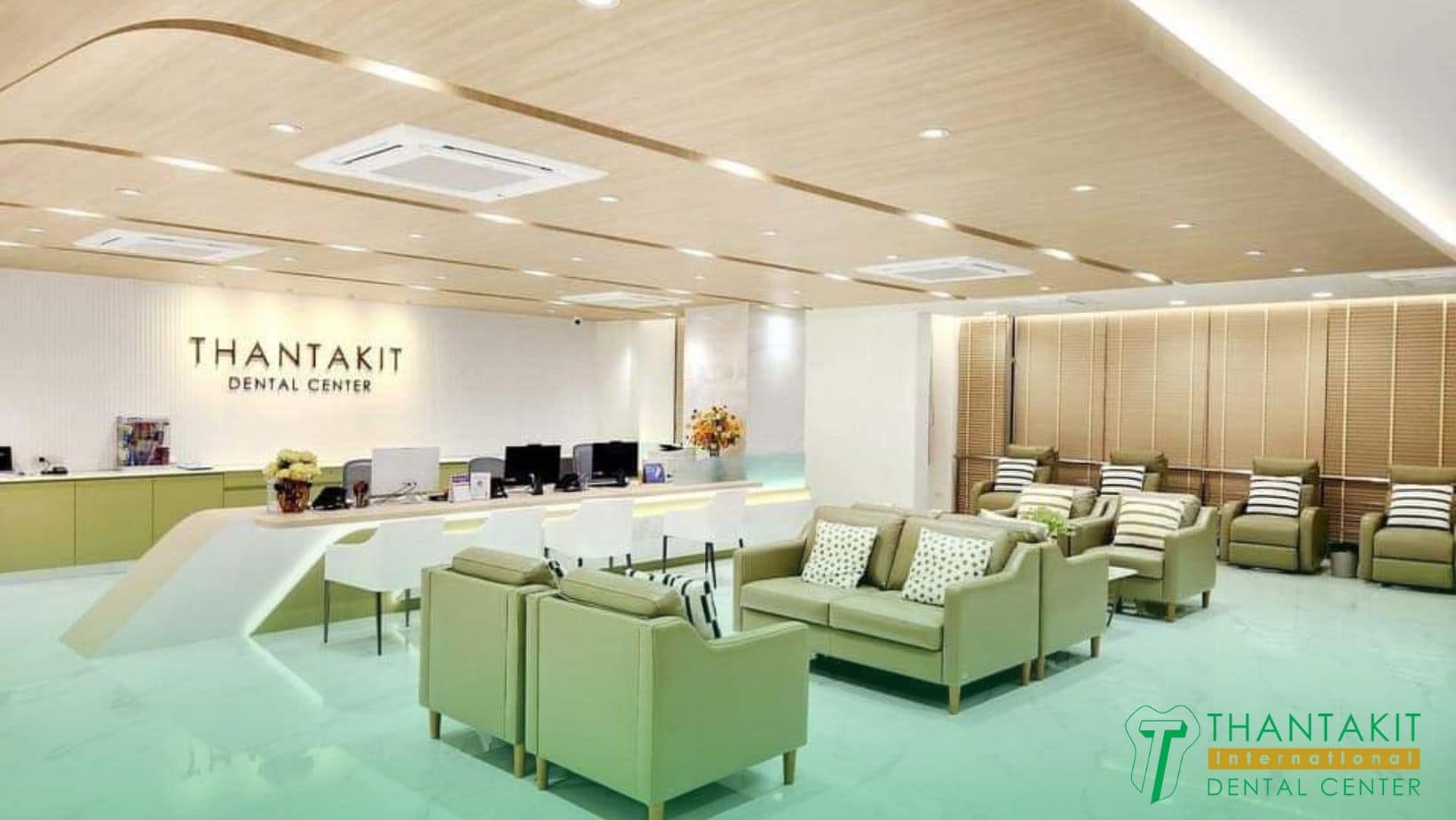
What Is a Sinus Lift and When Is It Needed?
Above your upper back teeth are hollow spaces called maxillary sinuses. These air-filled chambers, lined with a thin membrane, help keep the skull lightweight and play a role in breathing and voice resonance.
For many adults, especially those missing upper back teeth, these sinuses may drop lower over time, leaving only a sliver of bone between the mouth and the sinus cavity.
A sinus lift, sometimes called sinus augmentation, adds bone to the upper jaw in that specific area. This procedure is mostly needed for dental implants in the back upper jaw because there simply isn’t enough bone height otherwise.
Without sufficient vertical bone, an implant placed there could actually penetrate into the sinus cavity, causing serious complications like chronic sinusitis or implant failure.
The two typical sinus lift approaches are:
Direct (lateral window) sinus lift. This is the most common method for larger bone additions. The surgeon creates a small window in the side of the jaw, gently lifts the sinus membrane like peeling back wallpaper, and fills the space below with bone graft material.
It sounds more dramatic than it feels. Patients are numb during the procedure, and modern surgical techniques make it remarkably gentle.
Indirect (crestal) sinus lift. This approach works for smaller lifts, usually under 4mm. It’s done through the existing tooth socket or a small opening from the top of the jaw.
A special tool called an osteotome gently nudges the sinus floor upward, and bone graft material is packed in beneath. This technique is less invasive but only works when you need a modest amount of additional height.
According to implant specialists at Thantakit, direct sinus lifts are used when you need substantial bone building (typically 5mm or more), while indirect lifts work well for minor adjustments.
No matter which approach is used, the main goal stays the same: creating enough space and strength for a stable, long-lasting implant that won’t compromise your sinus health.
Comparing Bone Grafts vs. Sinus Lifts
| Feature | Bone Graft (any jaw) | Sinus Lift (upper back jaw) |
| Main goal | Add width/volume | Add vertical height |
| Typical time | 30–60 minutes | 60–90 minutes |
| Invasiveness | Low to moderate | Moderate |
| Healing window | 3–6 months | 4–6 months |
It can be hard to spot the difference between these two procedures, especially since they’re often discussed together. Here’s a clear comparison:
Purpose: Bone grafts fill areas of missing or thin bone anywhere in the jaw, whether upper or lower. Sinus lifts specifically raise the sinus floor and add bone in the upper back jaw only.
Location: Bone grafts could be needed in the upper jaw, lower jaw, or even both. Sinus lifts are always performed in the upper jaw, typically in the premolar and molar region.
Complexity: Some bone grafts are relatively small and straightforward, taking just 30 minutes. Sinus lifts demand more careful membrane handling, specialized training, and usually take 60-90 minutes.
Healing time: Both procedures typically need 3 to 6 months for the new bone to mature and integrate fully. The exact timing depends on the patient’s age, overall health, and the size of the graft.
Can they be combined? Yes, absolutely. Some patients need both a bone graft in one area and a sinus lift in another, or even a sinus lift that also includes additional bone grafting around the sides.
Your treatment plan at Thantakit will be customized to your specific anatomy and goals.
Both procedures prepare your mouth for implants in tailored ways based on the unique needs of your jaw. The key is having a thorough evaluation using digital imaging so the surgical team knows exactly what’s needed.
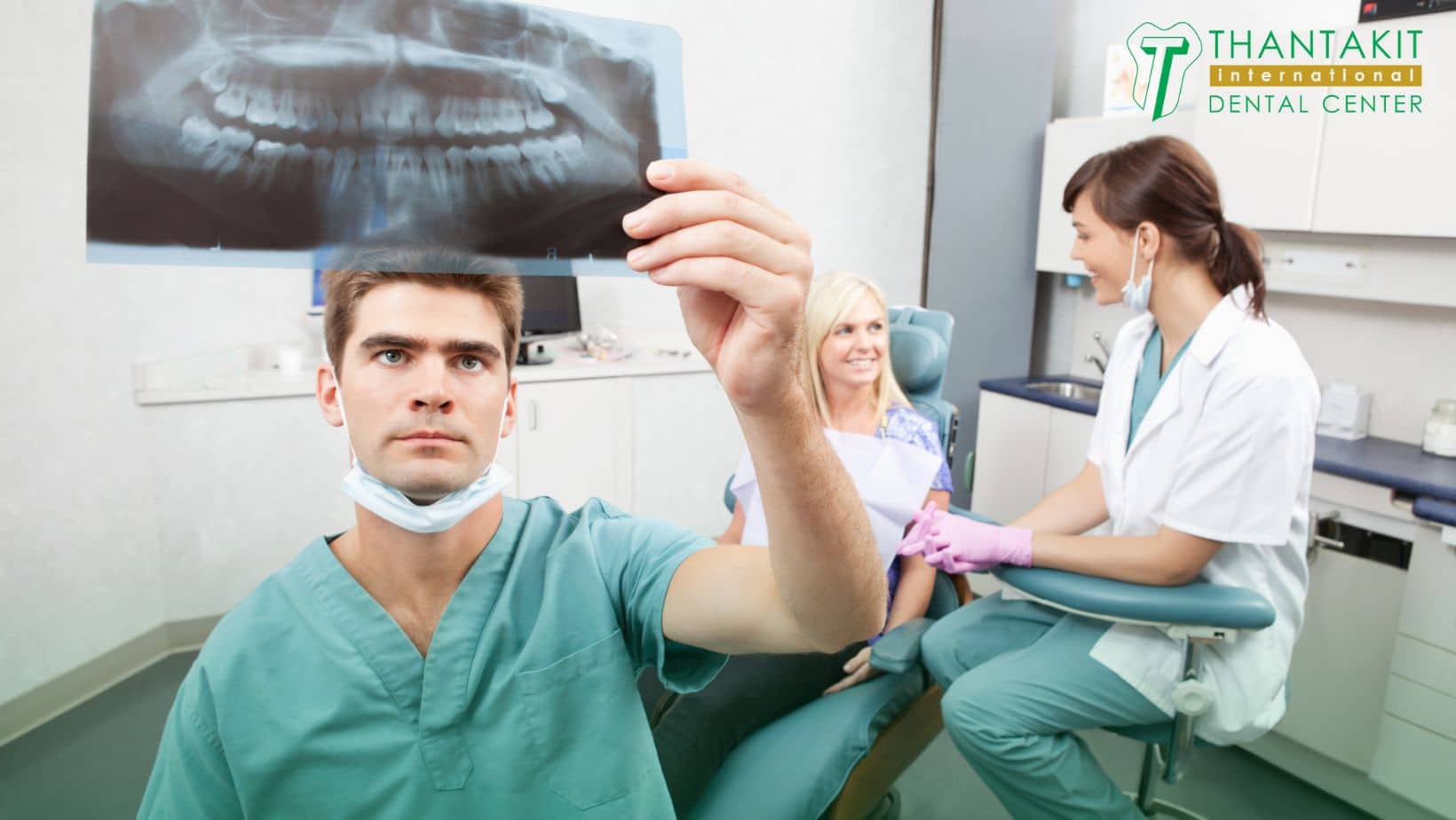
Timing and Treatment Planning for Overseas Patients
One of the most common questions I hear from dental tourists is about timing. How many trips will I need? How long should I stay? Can I combine the procedures somehow?
For bone grafts and sinus lifts, dental implant treatment typically happens in two main stages. Understanding this timeline helps you plan your travel, time off work, and budget more effectively.
Stage One: Bone preparation. During your first visit to Bangkok, the surgeon performs the bone graft or sinus lift. This appointment might take 1-2 hours depending on complexity.
You’ll need to stay in Bangkok for about 5-10 days total. This includes your initial consultation (if you haven’t done one remotely), the surgery day, and follow-up visits to check healing and remove sutures.
After that, you fly home and let your body do its work. The bone graft needs time to integrate with your natural bone, a process called osseointegration. This usually takes 3-6 months.
During this healing period, you’ll have virtual check-ins with Thantakit’s team. They might ask you to send photos or visit a local dentist for X-rays to confirm the graft is healing properly.
Stage Two: Implant placement and restoration. Once the bone has matured, you return to Bangkok for implant placement. This second trip is typically shorter, around 5-7 days.
The implants are placed, and after a brief healing period (sometimes just a few days for temporary crowns), the final crowns or bridges are fitted.
Some clinics can place implants at the same time as small bone grafts, a technique called simultaneous placement. But this only works when you have enough initial bone stability.
For larger grafts or sinus lifts, the two-stage approach is safer and more predictable.
From a practical standpoint, splitting the treatment into two trips works well for many dental tourists. You’re not stuck in Bangkok for months, and you can plan around work commitments.
It’s not just about logistics. It’s about comfort, planning, and peace of mind during recovery. Plus, having a reason to visit Thailand twice isn’t exactly a hardship.
Recovery and Healing Timelines
Thanks to modern technology and gentle surgical techniques, most people recover from bone grafts or sinus lifts with only mild swelling and soreness for a few days. The immediate recovery is actually easier than many people fear.
The longer part of recovery comes from letting your body create new bone tissue, a biological process that simply takes time.
Here’s what to expect during the healing journey:
First 48-72 hours. This is when you’ll notice the most swelling and possibly some bruising. Your face might look a bit puffy, especially around the cheeks if you had a sinus lift.
Some minor bleeding or oozing from the surgical site is normal. Most patients tell me the discomfort is manageable with regular over-the-counter pain medication like ibuprofen.
An ice pack applied to the outside of your face for 15 minutes on, 15 minutes off, really helps during this period. Sleeping with your head elevated on extra pillows reduces swelling more quickly.
Many patients set up a comfortable recovery spot with pillows, ice packs, soft foods, and entertainment before surgery day.
First week. A soft diet is essential during this time. Think soups, smoothies, yogurt, mashed potatoes, scrambled eggs, and protein shakes.
You want nutrition without the chewing that could disturb the graft site. Staying hydrated is equally important. Room temperature or cool liquids work best.
Avoid hot foods and drinks for the first few days, as heat can increase swelling. No drinking through straws either, especially after a sinus lift.
The suction pressure could dislodge the graft or damage the healing sinus membrane.
Days 7-10. This is typically when you’ll return to Thantakit for suture removal and a healing check. By this point, most of the swelling has resolved.
You’re probably feeling pretty normal, though the surgical site is still tender. You can gradually add softer solid foods, but still avoid anything crunchy or chewy on the surgical side.
Weeks 2-4. External healing is mostly complete. The gum tissue has closed over the surgical site. You’ll still need to be gentle when brushing that area, but you can resume more normal eating.
Many patients feel comfortable returning to work and social activities during this phase.
Months 2-6. This is the invisible part of healing where your body is busy creating new bone. You won’t feel anything happening, but beneath the gums, osteoblasts (bone-building cells) are working to integrate the graft material with your natural bone.
Regular check-ins with Thantakit’s team, even if done virtually from home, help ensure everything is progressing as expected.
Special considerations after sinus lifts. If you had a sinus lift, there are a few extra precautions. Don’t blow your nose forcefully for at least two weeks.
If you need to sneeze, do it with your mouth open to avoid building up pressure in the sinus. Avoid bending over or heavy lifting during the first week. These activities can increase pressure in your head and potentially disturb the graft.
If you develop a cold or sinus congestion during healing, contact Thantakit right away. They may recommend gentle decongestants or specific care to protect the healing graft site.

Planning Your Trip to Bangkok: Practical Considerations
Before you travel. The process often starts weeks or even months before your flight. You can request a virtual consultation where you upload recent X-rays, photos of your teeth, and a description of your goals.
Thantakit’s team reviews this information and provides a preliminary treatment plan and cost estimate. This step eliminates surprises when you arrive.
Having a clear treatment plan before booking your flights gives you peace of mind. You’ll know approximately how long to stay, what procedures are planned, and what the total investment looks like.
Travel arrangements. Plan to arrive in Bangkok at least one day before any dental appointments. This gives you time to adjust to the time zone, settle into your accommodation, and relax before surgery.
Jet lag and dental surgery don’t mix well.
Choose accommodation near the clinic if possible. Being close by means less travel stress, especially in the days right after surgery when you’re recovering.
Thantakit is located in a convenient area of Bangkok with plenty of hotel options for various budgets.
Your first visit for bone grafting. A typical timeline looks like this:
Day 1-2: Arrival, rest, and adjustment. Initial consultation at the clinic with comprehensive CBCT scans and final treatment planning.
Day 3: Surgery day. The actual procedure, then return to your hotel to rest.
Days 4-6: Recovery time. Soft diet, rest, and light sightseeing if you feel up to it.
Bangkok has plenty of temples, markets, and cultural sites that don’t require intense physical activity.
Day 7-9: Follow-up appointment to check healing and remove sutures. Final post-op instructions before heading home.
Day 10: Departure day if everything looks good.
I always urge patients to add a couple of buffer days in case anything needs extra time or if minor adjustments to the schedule are needed. While recovery means avoiding intense activities like water sports or heavy exercise, there’s still plenty of room for gentle exploration and experiencing Thai culture.
Remote follow-up after returning home. Once you’re back in your home country, Thantakit schedules virtual check-ins during your healing months. You might be asked to send photos of the surgical site or visit a local dentist for X-rays that get forwarded to Bangkok for review.
This ensures the graft is integrating properly and you’re ready for implant placement when the time comes.
Cost Advantages and Quality Standards in Thailand
One of the biggest benefits of dental tourism to Thailand is the clear cost savings. Bone grafts and sinus lifts at top Bangkok clinics are usually a fraction of what they cost in North America, Europe, or Australia.
This price difference isn’t about lower quality. It’s about lower operating costs, different economic conditions, and Thailand’s competitive dental tourism market.
Some realistic figures for reference:
Simple bone graft: 400-1,000 USD per site in Thailand, compared to 1,500-3,000 USD or more in Western countries.
Sinus lift: 1,200-2,500 USD in Bangkok, compared to 3,000-6,000 USD in the West.
Full dental implant treatment with bone grafting: Often 50-70% less expensive in Thailand when you factor in the complete package.
Even when you add airfare, accommodation, and food during your stay, many patients still save thousands of dollars. For people needing multiple implants or extensive bone work, the savings become even more significant.
The lower prices absolutely do not mean cutting corners. Reputable Bangkok clinics like Thantakit Dental Center use hospital-grade sterilization systems, imported implant brands from Switzerland and Germany, and surgeons with years of international training.
Dental teams speak fluent English, and many hold certifications from organizations like the International Congress of Oral Implantologists or the American Academy of Implant Dentistry.
Thantakit follows international infection control protocols, uses digital workflow for precision, and maintains equipment that rivals or exceeds what you’d find in major Western cities. Their commitment to sterility includes autoclaves that meet EU standards, single-use instruments where appropriate, and strict cross-contamination prevention protocols.

Alternatives When Bone Grafting Isn’t Possible
In some situations, traditional bone grafting might not be ideal. Perhaps a patient has medical conditions that complicate healing, or previous grafts have failed.
Maybe the bone loss is so severe that rebuilding would take too long. For these cases, advanced alternatives exist.
Zygomatic implants are longer implants that anchor into the cheekbone (zygoma) rather than the jaw. They bypass the need for bone grafting in the upper jaw entirely.
This technique requires specialized training but can be life-changing for patients who’ve been told they’re not candidates for regular implants.
Short implants are exactly what they sound like: shorter versions of standard implants designed for areas with limited vertical bone. Modern short implants (6-8mm) have success rates comparable to standard-length implants when placed correctly.
All-on-4 or All-on-6 systems are full-arch solutions that use strategically angled implants to maximize available bone. Sometimes these can be done without grafting, or with only minimal grafting.
Discussing these alternatives with Thantakit’s implant specialists during your consultation helps ensure you get the most appropriate solution for your specific situation. Not everyone needs traditional bone grafting, and knowing all your options empowers better decision-making.
Potential Risks and How They’re Managed
Like any surgery, bone grafts and sinus lifts come with some risks. I believe in being honest about this while also providing context.
The vast majority of patients heal without significant issues, but knowing what to watch for helps you feel prepared and confident.
Common minor side effects that most patients experience include temporary swelling, bruising, and soreness. These resolve within a week or so.
Some numbness or tingling in the surgical area can occur but typically fades as healing progresses.
Rare but possible complications include:
Extended swelling or infection. Proper oral hygiene and following antibiotic instructions (if prescribed) prevent most infections. If you notice increasing pain, fever, or unusual discharge after the first few days, contact the clinic immediately.
Graft not integrating. Sometimes the graft material doesn’t bond well with natural bone, especially in smokers or people with uncontrolled diabetes. Success rates exceed 90% in healthy patients, but certain risk factors reduce them.
Being honest about your health history during consultation helps the surgical team plan appropriately.
Sinus complications. After a sinus lift, the membrane could develop a small tear during surgery (usually repaired immediately with specialized techniques) or you might experience temporary sinus pressure.
Following post-op instructions, especially about not blowing your nose, prevents most problems.
Gum tissue issues. Occasionally stitches come loose or gum tissue doesn’t close perfectly over the graft. These issues are usually minor and can be addressed at follow-up appointments.
Thantakit’s surgeons minimize risks through detailed pre-operative planning, use of CBCT imaging to map anatomy precisely, and meticulous surgical techniques. They explain which symptoms are normal versus which ones need immediate attention.
This clear communication helps patients spot potential issues early when they’re easiest to address.
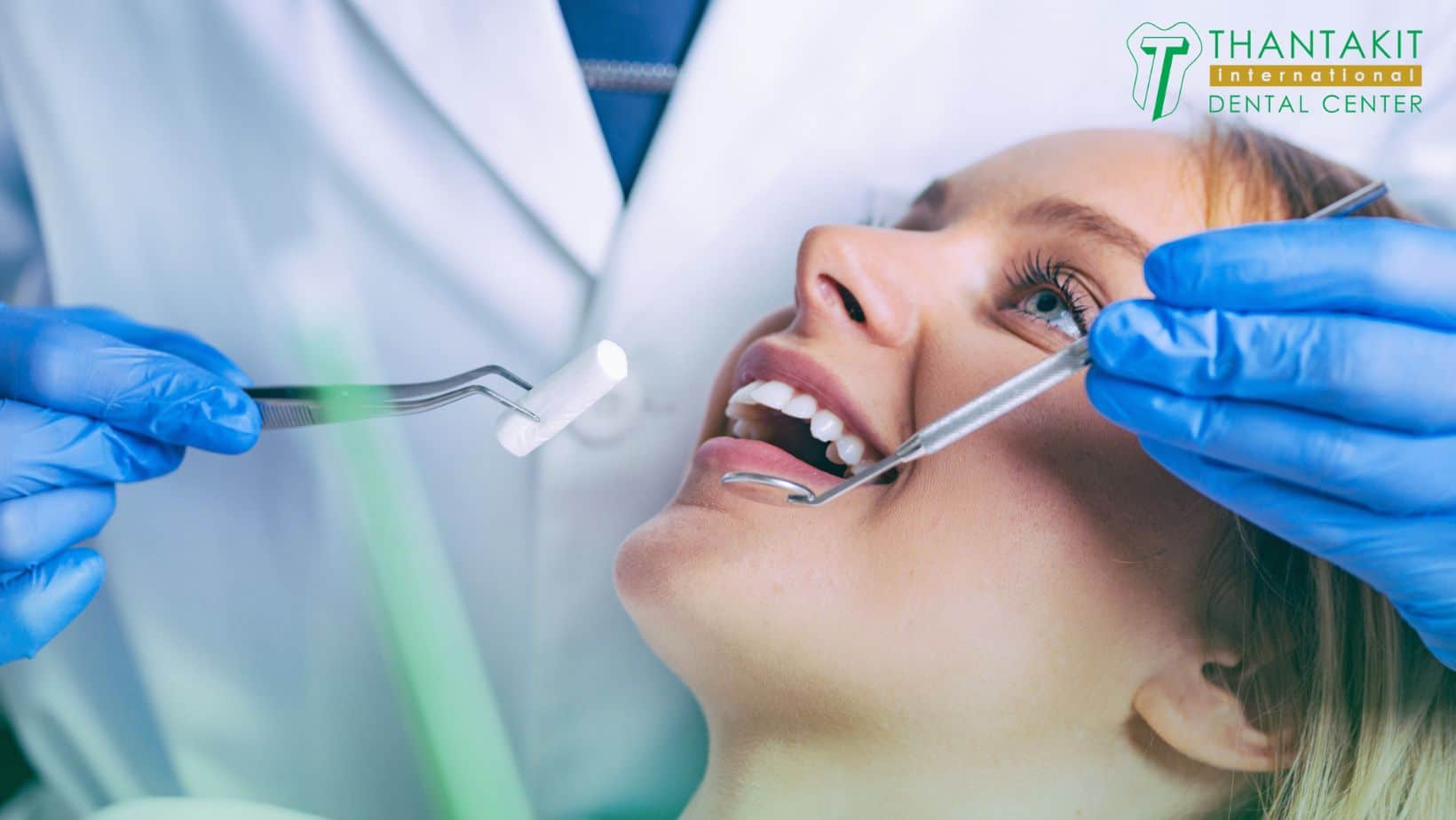
Understanding Treatment Outcomes and Success Rates
The results following bone grafts and sinus lifts at quality dental clinics are consistently positive. Success rates for bone grafting procedures typically exceed 90% when performed by experienced surgeons and when patients follow post-operative care instructions carefully.
Most patients report that the procedures are less uncomfortable than they anticipated. The combination of modern anesthesia, minimally invasive techniques, and clear aftercare guidance makes the experience manageable for the vast majority of dental tourists.
Within days, swelling subsides and normal activities resume. Within months, the grafted bone integrates fully, creating a solid foundation for dental implants.
The functional improvements after receiving dental implants on properly prepared bone are significant. Patients regain the ability to eat their favorite foods without restrictions, speak clearly without concerns about dentures shifting, and smile confidently in social and professional situations.
These improvements extend beyond physical function to include enhanced self-esteem and quality of life.
For long-term denture wearers, the transition to fixed implants often feels transformative. The stability and security of implants anchored in rebuilt bone eliminates the daily frustrations of removable prosthetics.
For those who’ve delayed treatment due to insufficient bone, discovering that grafting makes implants possible opens new possibilities they thought were closed.
International patients frequently express appreciation for the thoroughness of treatment planning at clinics like Thantakit Dental Center. Knowing exactly what to expect, having clear communication throughout the process, and receiving attentive follow-up care helps anxious patients feel supported through each stage of treatment.
The combination of advanced surgical techniques, quality materials, and experienced surgical teams means that bone grafting and sinus lifting in Bangkok deliver outcomes comparable to anywhere in the world, often at a fraction of the cost.
Frequently Asked Questions
Do I need a bone graft for every implant?
Not at all. Many patients have sufficient natural bone for implants without any grafting. Your dentist will evaluate your jaw with CBCT scans during consultation to determine if grafting is necessary.
Is a sinus lift painful?
Surgeons use local anesthesia or IV sedation, so you won’t have pain during the procedure itself. Afterward, some swelling and soreness are normal. Pain medication handles any discomfort during the first few days.
How long do I need to wait before getting my implants?
Typically, you’ll wait about 3 to 6 months after a bone graft or sinus lift. The exact timeline depends on your body’s healing speed, your age, overall health, and the size of the graft.
Can bone grafts fail?
It’s rare with proper planning and aftercare, but yes, sometimes grafts don’t fully integrate with natural bone. This happens more often in smokers or people with uncontrolled diabetes.
Following all post-operative instructions dramatically improves your chances of success. Success rates at quality clinics exceed 90%.
Is it safe to fly after the procedure?
Most patients can fly a few days after surgery once the major swelling has subsided. After sinus lifts, some surgeons recommend waiting 5-7 days due to cabin pressure changes during takeoff and landing.
Always check with your Thantakit surgeon before booking your return flight.
How much extra time should I plan for my trip to Thailand?
Plan for 7-10 days for your initial visit (bone graft or sinus lift plus early recovery). For your second visit when implants are placed, budget 5-7 days.
Adding a buffer day or two on each trip provides flexibility if healing needs extra monitoring.
What happens if something goes wrong after I return home?
Thantakit maintains contact with patients throughout the healing process. If complications arise, they can coordinate with local dentists in your area or provide guidance remotely.
They also maintain professional liability insurance and have protocols for managing any post-treatment issues.
Can implants ever be placed the same day as a small graft?
Sometimes, yes. If initial bone stability is good, surgeons can place an implant and a minor graft in one visit. Your CBCT will guide that call.
Do I need IV sedation or is local anesthesia enough?
Most grafts and sinus lifts are done comfortably with local anesthesia.

Moving Forward with Your Dental Journey in Bangkok
Bone grafts and sinus lifts are now considered standard components of modern implant dentistry. They’re not something to fear but rather tools that make successful implant treatment possible for a much wider range of patients.
Surgeons at clinics like Thantakit Dental Center in Bangkok have refined these procedures to be comfortable, predictable, and accessible for international patients.
If you’re ready to take the next step toward restoring your smile, I strongly encourage you to book a comprehensive consultation with Thantakit International Dental Center. Their team will carefully review your digital scans or X-rays, answer all your questions honestly, and map out a treatment plan that fits your specific needs, timeline, and budget.
Whether you’re dealing with long-term tooth loss, preparing for your first implant, or exploring options after being told elsewhere that you’re not a candidate, Thantakit’s specialists can help you understand exactly what’s possible. They’ve helped patients from dozens of countries achieve successful implant outcomes, including many who needed extensive bone preparation first.
Individual results vary. Your surgeon will tailor the plan to your medical history, bone quality, and travel schedule.
Ready to restore your smile? Contact Thantakit Dental Center. Send your X-rays or CBCT, get a clear plan and cost estimate, and schedule treatment dates that fit your travel. Most patients need 7–10 days for grafting or a sinus lift, then a 5–7 day follow-up trip for implants.
